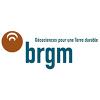SAFE
The SAFE project focuses on the dispersion of pathogenic fibres from naturally occurring asbestos (NOA) in surface waters. Although numerous scientific researches, since several decades, studied asbestos fibres in aerosols, released by asbestos or asbestiform mineral outcrops, little research constrain their dispersion by surface water. However, as all geological outcrops, the NOA are subject to leaching by rainwater, which favors the transport of sedimentary particles by runoff to surface waters. This transport is likely to involve the sedimentation of pathogenic fibres at greater or lesser distances from the initial outcrop, thus creating new potential sources of aerosols including pathogenic fibres. These fibres could also enter into the composition of suspended matter transported by watercourses, and sometimes infiltrated into drinking water catchments, particularly during heavy rainfall events. So, prevention of health risks associated with exposure to asbestos fibres, need the characterisation of the impact of transport by freshwater on the emission capacities of pathogenic fibres. The SAFE project thus proposes to provide new information on the subject.

Partners : CNRS, Ifremer, Institute of Geosciences and Earth Resources Turin, Université de Turin
Project duration 19 month(s)
Associated program

Responsable scientifique
ISEA
Outcrops of asbestos minerals expose populations to significant health risks. Natural (erosion, leaching) or anthropogenic (mining, quarrying, road works, land use planning, etc.) mechanical stresses favor the fractionation of asbestos-type minerals. The dispersion in the environment of fibres and fibrils is likely to trigger serious pathologies when they penetrate the organism (lung cancers, mesothelioma, etc.). However, the risks associated with exposure to environmental fibre emissions are still not well known. The protocols required to link the probability of exposure (occurrence/emissivity) and the associated health impact (in vitro and in vivo toxicological tests) remain to be defined in order to better assess and manage the risk.
Exposure types to elongated mineral fibres and particles are diverse. Research on natural occurrences of asbestos (NOA) focuses on exposure by dispersal of contaminated aerosols. Similarly, health studies focus mainly on pathologies related to inhalation of fibres. However, like any mineral particle, fibres present in outcrops are likely to be eroded and then transported during runoff to infiltrate deep groundwater or contribute to the suspended matter in watercourses. Water is a transport agent that can disperse particles over very long distances and thus generate new asbestos outcrops after deposition. While a rock outcrop easily reveals the presence of asbestos minerals to geologists or trained persons, the mass of transported sediments may hide the presence of easily mobilized fibres in sedimentary deposits. A better assessment of the health risk from natural occurrences of asbestiform minerals requires consideration of freshwater transport to population exposure to pathogenic fibres.
In New Caledonia, the island of “Grande Terre” , has potentially asbestos lands over more than half of its area. Exposure to natural occurring of asbestos is a major public health issue in the territory. The presence of asbestiform minerals not recognized as asbestos, but presenting toxic effects, as well as the potential increase in the capacity to release pathogenic fibres and fibrils under the influence of the tropical climate, contribute to increasing the health risk incurred by the Caledonian population. In the context of better prevention of NOA-related health risks, it is therefore important to understand the capacity of fibres dispersions by freshwater through the example of New Caledonia.
The SAFE project is highly multidisciplinary, as demonstrated by the project's scientific consortium. The field part is the responsibility of the team's geologists. The aim is to ensure that the sampling, which is limited in quantity, is sufficiently representative of the outcrops of asbestiform minerals and sediments transported by fresh water. Sampling will mainly concern surface water and sediments. Drinking water will also be sampled during periods of high flooding. The sampling missions and geochemical analyses will be capitalized as much as possible with the ECOMINE project, led by Hugues Lemonnier (CRESICA, au fil de l'eau). The SAFE project will mainly consist on sampling ultrabasic catchments influenced of current or past mining activity. This choice is also consistent with the expertise acquired by the SAFE project's scientific consortium, whose members have participated in previous CRESICA (SEARSE) and CNRT (Amiante et Bonnes Pratiques, DYNAMINE) projects. The SAFE project consortium members are also collaborating in a project funded by the Italian government whose objective is, among other things, to develop a methodology for assessing the health risk linked to the presence of NOA, based on outcrop. The SAFE project will be able to draw on the results acquired during the Italian programme at the Tontouta mining site in New Caledonia.
A continuum from upstream to downstream will draw an initial assessment of the dispersal capacity of freshwater. The SAFE project will provide the first elements of a response, but these will have to be confirmed later, as the number of samples cannot be increased within the framework of the CRESSICA calls for projects.
The X-ray diffraction and Raman spectrometry analyzes will access to all samples mineralogy. At first binoculars and then by electron microscopy visualizations will confirm or not the presence of fibrous forms. In accordance with the NF-X 43050 standard, applied in the CRESICA P2M lab, transmission electron microscopy will quantify of the fibres. EDX analyzes will evaluate the surface geochemistry of the isolated fibres. In the continuity of the work previously initiated by the SAFE project's scientific team, a very innovative approach using machine learning methodologies applied to microscopy images for automated fibre recognition will be developed.
The LAC (Laboratory under controlled atmosphere) of the UNC, will host experiments under controlled conditions that simulate the natural environment as closely as possible. The objectives are to better constrain the evolution of the morphological and physico-chemical properties of the fibres during their transport or residence in fresh waters.
Antigorite is an asbestiform mineral, not listed as an asbestos in European legislation. This mineral is widely found in Caledonian ultrabasic units, particularly on mining sites. Initial in vitro toxicology analyses carried out in the “Amiantes et bonnes pratiques” program highlighted that there may be a correlation between increasing supergene alteration and the reactivity of antigorite samples to toxicity tests. The SAFE program proposes to extend these experiments in order to consolidate these very first results from the scientific community on the toxicity of Caledonian antigorite.
The SAFE project will spread out over 2 years, which is necessary to complete the sampling during the different annual seasons and to finalize the particularly time-consuming analyses.
Le 29 août 2023, le CRESICA organisait le séminaire de restitution "Au fil de l'eau" qui a permis de présenter les résultats du projet.
Brochure: "Des projets de recherche sur la thématique de l'eau en Nouvelle-Calédonie."
Visionnez la présentation faite lors du séminaire grâce à la vidéo du projet SAFE par C.Laporte-Magoni
Rapport final : projet SAFE















